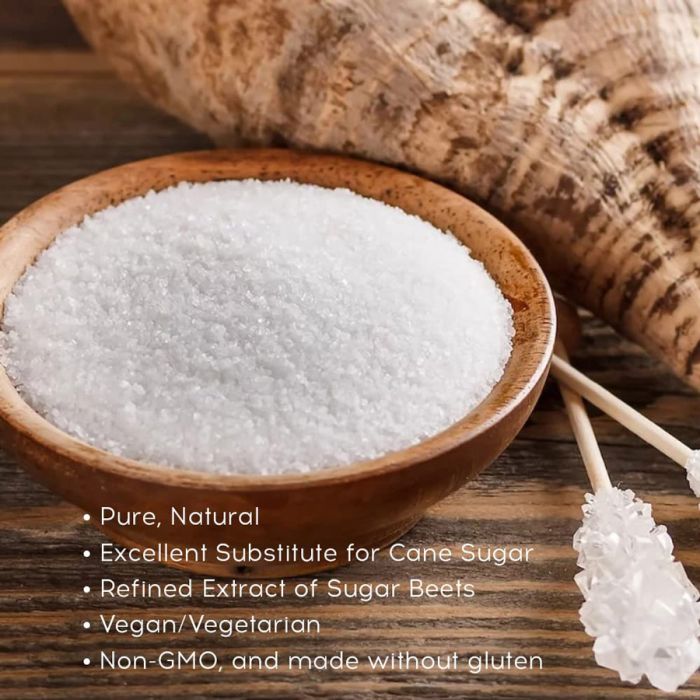Examining beet sugar vs cane sugar reveals distinctions in price differences and distribution.
Examining beet sugar vs cane sugar reveals distinctions in price differences and distribution.
Blog Article
Discover the Uses and Perks of Beet Sugar Vs Cane Sugar in Your Daily Diet
Discovering the unique qualities of beet and cane sugar reveals greater than simply their sweetening abilities; it highlights their unique effect on health and wellness and cookeries. Beet sugar, understood for its subtle taste, is usually favored in fragile treats, whereas cane sugar, with its hint of molasses, includes richness to durable meals. Each kind holds its very own nutritional account and glycemic effects, welcoming a much deeper understanding of their functions in a balanced diet regimen and sustainable intake methods.
Beginning and Manufacturing Processes of Beet and Cane Sugar

The distinct environments and soil kinds needed for expanding sugar beets and sugarcane add to differences in their farming practices and geographical distribution, affecting the business economics and sustainability of their manufacturing. beet sugar vs cane sugar.
Nutritional Comparison In Between Beet Sugar and Cane Sugar
Regardless of stemming from various plants, beet sugar and cane sugar are nutritionally extremely comparable, both mainly being composed of sucrose. Each supplies about 4 calories per gram, translating to roughly 16 calories per teaspoon. Structurally, both sugars are composed of roughly 99.95% sucrose, with very little quantities of various other compounds like dampness and trace element, which do not significantly alter their nutritional profiles.

Eventually, when picking between beet sugar and cane sugar based on nutritional content alone, both offer similar advantages and downsides as they are essentially kinds of the same molecule-- sucrose, offering quick power without various other nutrients.
Effect On Health: Glycemic Index and Caloric Content
Exploring further right into the impacts of beet sugar and cane sugar on health and wellness, it is essential to consider their glycemic index and caloric content. Both sugars are identified as sucrose, which is composed of glucose and fructose. This composition leads them to have a comparable effect on blood glucose levels. The glycemic index (GI) of both beet and cane sugar is around 65, classifying them as high-GI foods, which can trigger quick spikes in blood sugar levels. This is a vital aspect for people handling diabetes or those attempting to support their energy degrees throughout the day.
Each kind of sugar consists of about 4 calories per gram, making their caloric web content equivalent. For those keeping track of calorie consumption, especially when taking browse around these guys care of weight or metabolic wellness conditions, comprehending this equivalence is essential (beet sugar vs cane sugar). Excessive consumption of any type of high-calorie, high-GI food can add to health and wellness issues such as obesity, heart disease, and insulin resistance.
Environmental and Economic Factors To Consider of Sugar Production
Beyond health and wellness influences, the manufacturing of beet and cane sugar also increases significant ecological and economic worries. Sugar beet farming often tends to call for cooler climates and has a lower geographical impact contrasted to sugar cane, which flourishes in exotic regions.
In addition, making use of chemicals and plant foods in both beet and cane sugar farming can bring about soil deterioration and air pollution, additional impacting biodiversity and regional water bodies (beet sugar vs cane sugar). The choice in between cultivating sugar beet or cane commonly pivots on regional environmental conditions and economic factors, making the sustainability of sugar manufacturing a complicated concern
Culinary Applications and Taste Distinctions
While the ecological and financial aspects of sugar manufacturing are without a doubt considerable, the option between beet and cane sugar likewise influences cooking applications and flavor accounts. Beet sugar, stemmed from the sugar beet plant, is understood for its remarkably neutral taste. This makes it a flexible component in cooking, where it does not alter the taste home of various other elements. It dissolves rapidly and is optimal for usage in cakes, cookies, and breads.
Walking stick sugar, drawn out from sugarcane, usually keeps molasses Resources traces, which pass on an unique splendor and deepness. This minor molasses flavor improves the intricacy of baked goods, sauces, and sauces. It is particularly preferred in things where a caramel undertone is desired, such as in brownies or gingerbread. Additionally, the slight variant in moisture material in between beet and cane sugar can influence the appearance and uniformity of meals, making cane sugar a recommended choice for particular dishes that gain from its unique homes.

Conclusion
In conclusion, both beet and cane sugar have distinct beginnings and production processes, using similar nutritional accounts with slight distinctions in sodium material and taste. While their effect on wellness, particularly pertaining to glycemic index and calories, is equivalent, the choice in between them frequently comes down to ecological, financial elements, and specific cooking needs. Recognizing these facets can direct consumers in making notified decisions that line up with their health and wellness objectives and flavor preferences.
Report this page